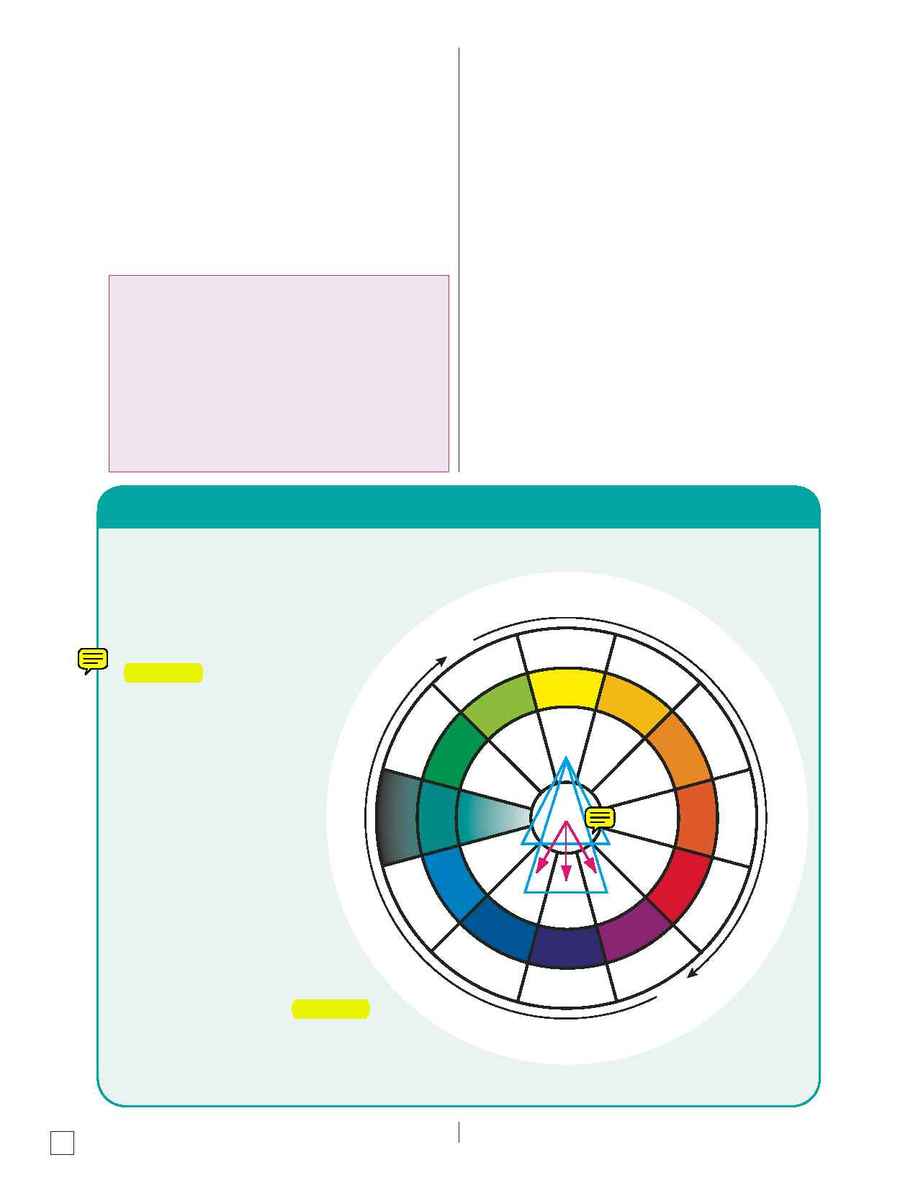
m a k e u p
Salon Fundamentals
TM
Esthetics
410
Complementary color schemes use colors that
are directly across from each other on the color
wheel in order to achieve the greatest amount
of contrast. Makeup artists often choose to use
complementary color schemes to enhance
eye color.
Warm and cool are terms used to describe the
tones of colors and of the skin. Warm colors
contain red or yellow undertones, while cool
colors contain blue undertones. Warm colors
are generally categorized in the orange and
red half of the color wheel, while cool colors
are grouped as blue and green tones. Yellow-
green and red-violet can be considered either
warm or cool, depending on whether there's
more pigment from the cool side or the warm
side of the Color Schemes Wheel. Tones that
are neither warm nor cool are considered
neutral. Skin tones as well as cosmetics are
classified into the three color categories of
warm, cool and neutral.
Monochromatic color schemes use the
same color with variations in value
and intensity throughout the
entire makeup design.
Analogous color schemes use
three colors that are
adjacent to each other on
the color wheel. These
color combinations are
often used for daytime
makeup designs, as
shown by the pink arrows.
Triadic color schemes use
three colors located in a
triangular position on the
color wheel. Because this
combination is more dramatic
than monochromatic or analogous
color schemes, triadic designs are
often used for more vibrant effects.
Yellow Yello
w-O
ran
ge
O
ra
ng
e
R
ed
-
O
r
an
g
e
R
ed
Red
-Vi
olet
Vio
let
B
lue
-V
iol
et
B
lu
e
B
l
u
e
-
G
r
ee
n
G
re
en
Y
ell
ow
-Gr
een
C
O
O
L
C
O
L
O
R
S
W
A
R
M
C
O
L
O
R
S
COLOR SCHEMES WHEEL
Color Vocabulary:
·
Hue is another term for color.
·
Tint is a hue with white added.
·
Shade is a hue with black added.
·
Value is the lightness or darkness of a color.
·
Intensity refers to the vibrancy of a color.
·
Tone refers to the warmth or coolness of
a color.
